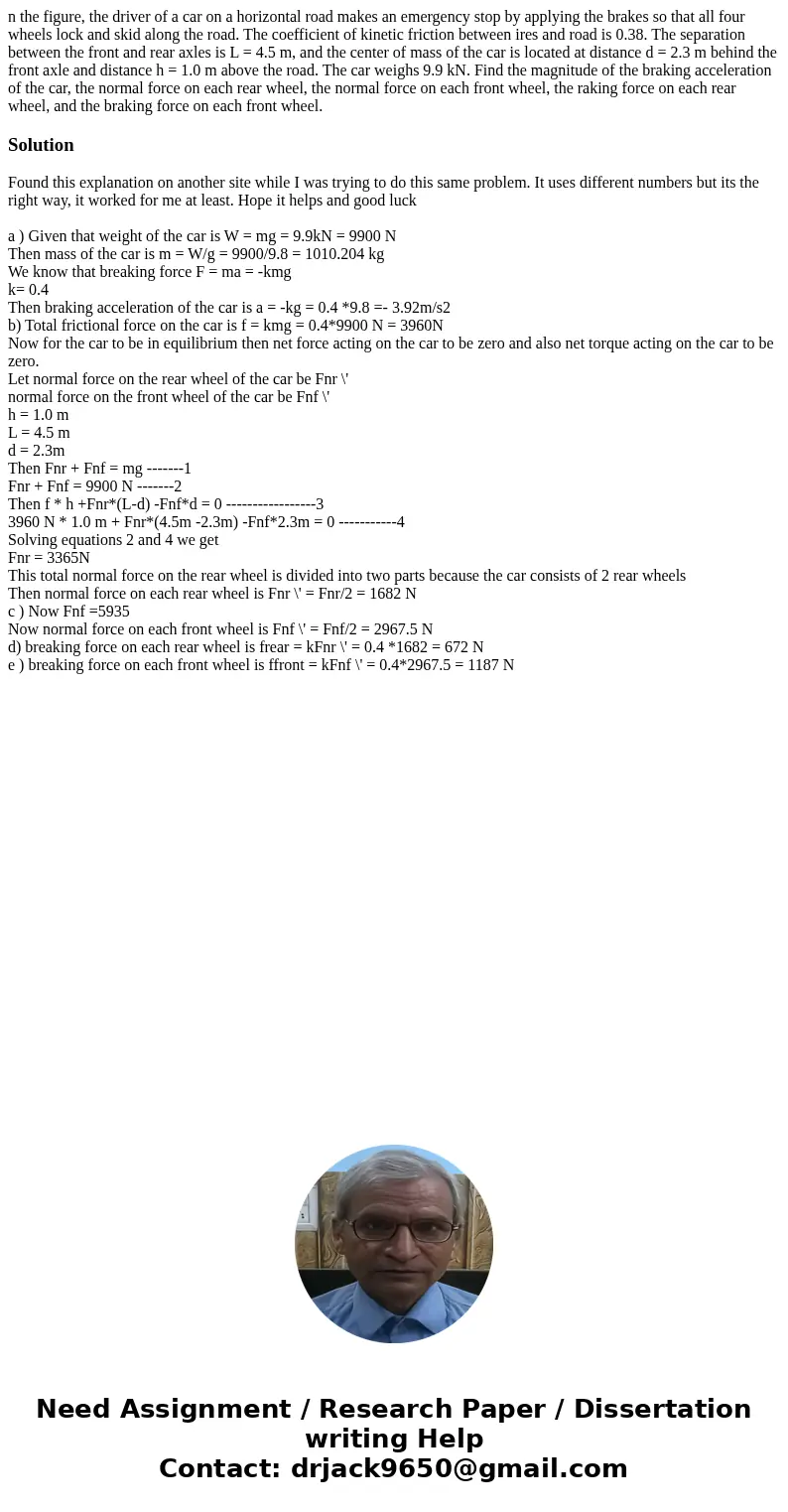n the figure the driver of a car on a horizontal road makes
Solution
Found this explanation on another site while I was trying to do this same problem. It uses different numbers but its the right way, it worked for me at least. Hope it helps and good luck
a ) Given that weight of the car is W = mg = 9.9kN = 9900 N
Then mass of the car is m = W/g = 9900/9.8 = 1010.204 kg
We know that breaking force F = ma = -kmg
k= 0.4
Then braking acceleration of the car is a = -kg = 0.4 *9.8 =- 3.92m/s2
b) Total frictional force on the car is f = kmg = 0.4*9900 N = 3960N
Now for the car to be in equilibrium then net force acting on the car to be zero and also net torque acting on the car to be zero.
Let normal force on the rear wheel of the car be Fnr \'
normal force on the front wheel of the car be Fnf \'
h = 1.0 m
L = 4.5 m
d = 2.3m
Then Fnr + Fnf = mg -------1
Fnr + Fnf = 9900 N -------2
Then f * h +Fnr*(L-d) -Fnf*d = 0 -----------------3
3960 N * 1.0 m + Fnr*(4.5m -2.3m) -Fnf*2.3m = 0 -----------4
Solving equations 2 and 4 we get
Fnr = 3365N
This total normal force on the rear wheel is divided into two parts because the car consists of 2 rear wheels
Then normal force on each rear wheel is Fnr \' = Fnr/2 = 1682 N
c ) Now Fnf =5935
Now normal force on each front wheel is Fnf \' = Fnf/2 = 2967.5 N
d) breaking force on each rear wheel is frear = kFnr \' = 0.4 *1682 = 672 N
e ) breaking force on each front wheel is ffront = kFnf \' = 0.4*2967.5 = 1187 N

 Homework Sourse
Homework Sourse